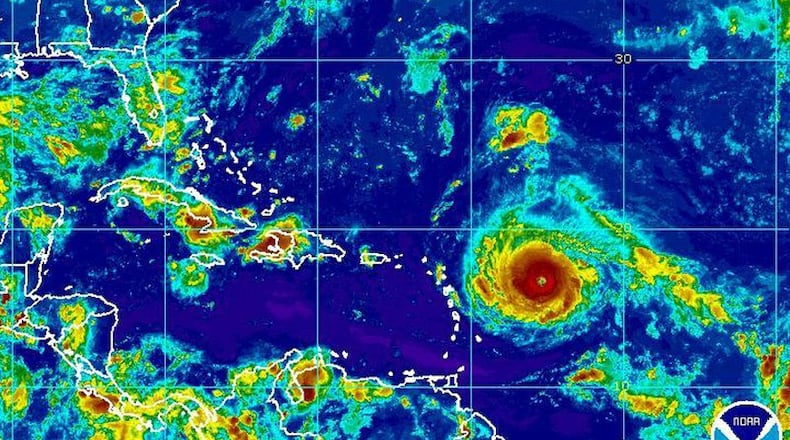Gov. Nathan Deal's overhauled storm response strategy - and his new head of the emergency management agency - face what could be their most significant weather-related challenge yet as Hurricane Irma barrels toward the Atlantic coast.
The Category 5 storm, with lashing winds topping 185 miles an hour, is one of the most powerful Atlantic storms ever recorded, and it's projected to rake Georgia's coast early next week.
It will be the biggest weather threat since Homer Bryson, a former corrections commissioner, was tapped to lead the state's emergency management agency shortly after Hurricane Matthew battered Georgia in October. And it will test Deal's weather response plan - and his better-safe-than-sorry mantra - in new ways.
That approach was on display Wednesday when the governor declared a state of emergency in six coastal counties and signed orders enforcing bans on price gouging and easing restrictions for drivers ferrying food and other supplies across the region.
Deal has taken few chances after the poor communication and slow government response to the 2014 ice storm that transformed a dusting of wintry weather into an embarrassing debacle for Georgia. Deal and other state officials say they've learned from their mistakes.
A weather task force appointed by the governor has led to more equipment and more coordination between state and local officials. And Deal has embraced preemptive preparations, declaring emergencies and calling for workers to stay home when severe weather threatens.
That's what happened when wintry weather walloped Georgia three weeks after that 2014 ice storm, and again in 2015 when a new round of snow threatened metro Atlanta.
And Deal used the same strategy in October to respond to Hurricane Matthew, which killed at least four people in Georgia and caused millions of dollars in damage. Using the word "cautious" several times to describe his approach, he urged coastal residents to escape the coming storm and ordered one of the state's largest evacuations.
The state's response to that hurricane was largely praised, but behind-the-scenes at the Georgia Emergency Management Agency an internal storm ratcheted up tensions.
Documents obtained through the Open Records Act showed a frenzy of activity as state officials prepared to move inmates, readied road-clearing equipment and evacuated hundreds of thousands of people from the Category 2 storm. They also showed a dust-up at GEMA's highest ranks between then-director Jim Butterworth and Clint Perkins, head of the agency's operations center.
According to emails - and what appeared to be a farewell note - Perkins was threatened with being fired in the middle of the response, though he was never terminated. He was later granted a $20,000 salary increase under a Jan. 30 settlement agreement.
Shortly after the storm passed, Butterworth sent word that he was leaving for a private-sector job. Deal's top aide said it was a long-planned departure and that Butterworth, a former head of the Georgia National Guard, had briefed the governor on his plans in September.
The governor soon turned to Bryson, an even-keeled former parks official who served more than three decades in state government and prefers to stay out of the spotlight.
Depending on Irma's path, he could soon be thrust to the forefront.
About the Author
The Latest
Featured




